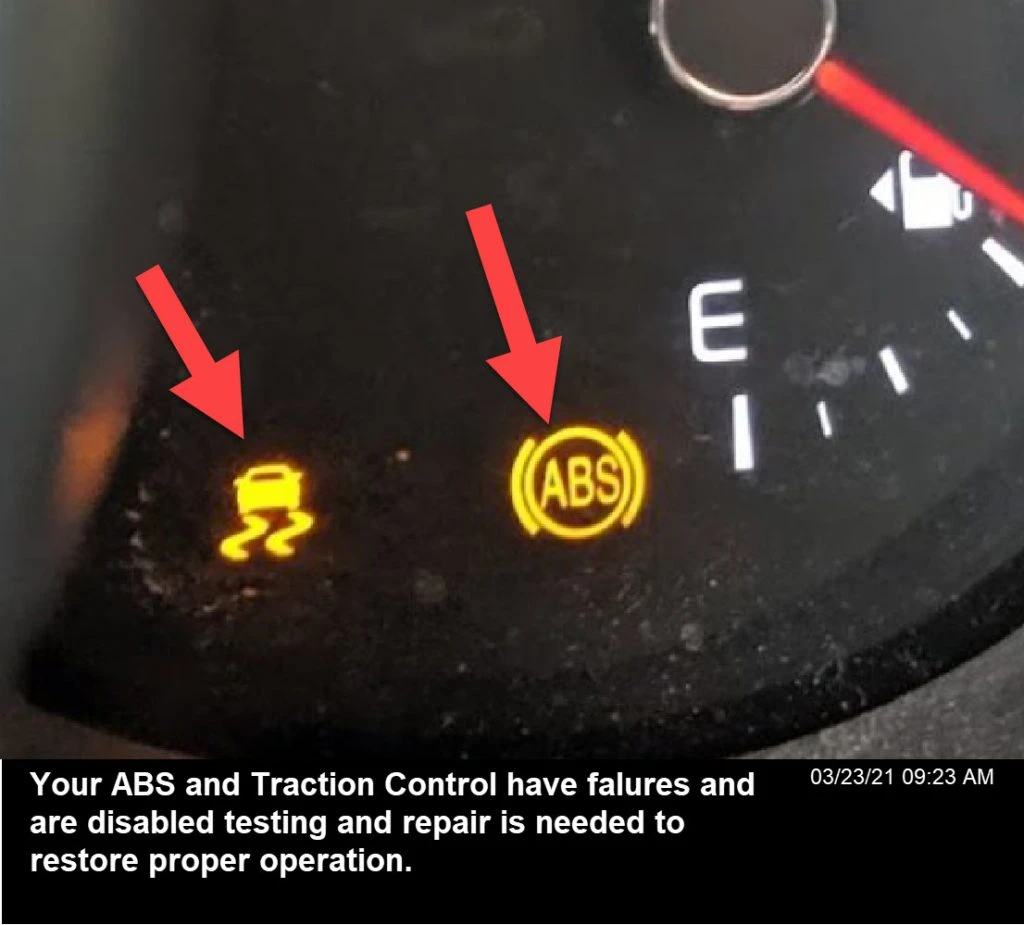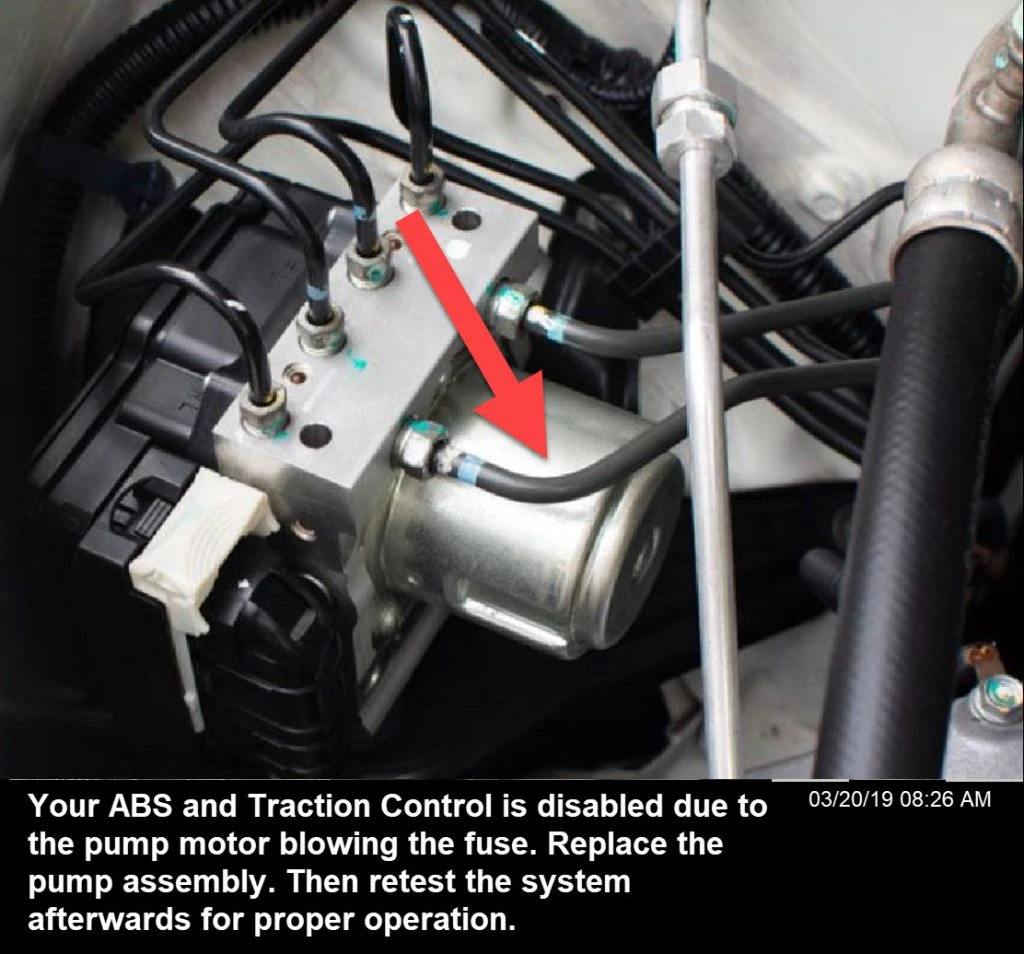
The Anti-lock Brake System (ABS) is a vehicle technology that might have appeared on your car's dashboard a few times. This technology has all to do with vehicle performance, being a key helper in urgent braking.
In this article, we'll simplify the most common questions about ABS, discussing its meaning, how it works, behaves, and more.
What is an Anti-lock Brake System (ABS)?
The Anti-lock Brake System, or ABS, is a feature in modern vehicles. Its job is to prevent the wheels from becoming "completely still" when braking hard; it basically allows the wheels to move and brake in micro intervals. Doing so gives the driver better steering control and avoids skidding or losing control.
ABS has various sensors that constantly monitor each wheel's speed. So, it knows when to push brake pressure to specific wheels, enabling safe and effective braking.
The ABS is essential in modern vehicles, especially on slippery roads and highways, so it's crucial to keep it working. Regular maintenance and awareness of any related issues are a must. Ignoring or delaying ABS repairs can make emergency braking less effective. Always take your car for regular ABS-related checks or repairs for peace of mind.
Why is ABS important?
Without ABS, your wheels can lock up while braking, making your vehicle steer like a sled on ice. ABS ensures that your wheels do "micro-brakings," giving you control even when flooring the brake pedal.
The ABS micro-brakings are the result of extensive research and testing. Researchers used principles of friction, traction, and kinetic energy. In short, they performed plenty of tests and found that a controlled wheel rotation while braking is effective and safe for urgent stops.
How do I know if my car has ABS?
Simply observe your dashboard after turning your car on. An icon (typically in orange or yellow) that reads "ABS" should lite up for a few seconds. Older vehicles might not have this type of technology since it became widely introduced in the 80s.
Still, note that the light should switch off after a few seconds, so something might be faulty if it stays on too long. Different sensors might become damaged and send wrong information to the dashboard, so have ABS maintenance if the light never fades.
What does it feel like when ABS kicks in?
When the ABS kicks in, you might feel a distinct pulsing or subtle vibration under your foot on the brake pedal. This happens because of the system's quick brake pressure to prevent wheel lock-up. You might also notice a buzzing noise that comes from the ABS' hydraulic components. Additionally, there might be some noticeable vibration in the steering wheel.
However, if you continuously feel a strong pedal pulsation even during gentle braking or notice the ABS warning light constantly lit on your dashboard, consider having maintenance. The ABS has different components and sensors that can malfunction and interfere with its ability to control the brakes.
My ABS light is on. What should I do?
The ABS light illuminates your dashboard when you perform an urgent brake. However, if it constantly keeps active on the dashboard, even during regular driving, it's a maintenance warning. In this case, you should take the car for maintenance as the computer is signaling an issue with the ABS.
For your safety and peace of mind, never ignore the ABS light and always prioritize expert care for your vehicle. Typically, this light pops up when the system hasn't had maintenance for a long interval.
Can I still brake if the ABS fails?
Yes, the ABS is like a "buffed-up" version of your standard braking system, but when the ABS malfunctions, the regular braking remains functional. However, without the ABS in play, the wheels might lock up during intense braking. So, it's vital to avoid urgent braking in this case and drive with extra safety measures.
If the ABS isn't working on your vehicle, you must fix it. Consider taking your car for maintenance and repair, so the ABS can do its job again and provide the intended safety.
Does ABS make my stopping distance shorter?
Often yes. The main goal of ABS isn't to make you stop short but rather to enhance vehicle control during braking. However, better vehicle control results in a shorter braking distance since it prevents the car from skidding, especially on wet or slick roads. So, by avoiding wheel lock-up, the ABS' shorter stopping distance is like an indirect side effect.
If the ABS doesn't make your car's brakes more efficient in wet or slick terrains, consider having scheduled maintenance. The ABS should perform the same in all types of climate and road conditions.
Do I need to do any special maintenance for ABS?
Yes. Like other parts of your vehicle, the ABS benefits from routine inspections. Typically, during regular service visits, a mechanic will assess the ABS alongside other components in the braking system. However, mention it to the mechanic if you're getting weird symptoms like a distinct pulsing sensation when braking gently or a constantly lit ABS light on the dashboard.
The ABS demands a high level of attention. So, when taking the car for maintenance on this system, keep the mechanic in the loop about all the symptoms you're noticing regarding the brakes.
I've heard about "pumping the brakes." Do I need to do that with ABS?
No, the ABS activates with impressive speed when you "floor" the brake pedal—no need to press any button or use any specific technique. The ABS detects the urgency when you press the pedal, then kicks in and does its thing automatically.
If, for some reason, you stump the brakes and the car still skids or seems very bad at braking, the ABS might not have kicked in. In this case, try to memorize the context in which you pressed the brakes and all surrounding symptoms when you pushed the pedal. It's necessary to take the car for ABS maintenance and mention these observations to the mechanic.
Is ABS the same as traction control or electronic stability control?
They're more like coworkers from the same department. On the one hand, ABS prevents wheel lock-up when braking. On the other hand, traction control prevents wheel slip during acceleration, and electronic stability control helps to stabilize your vehicle during maneuvers and turns. They are a modern team in managing control and safety for cars.
The harmony between ABS, traction control, and electronic stability control ensures a quick response from your vehicle during braking, accelerating, or cornering. As they are safety-related, keeping these systems' maintenance up-to-date is a priority. Shops will typically inspect all three during scheduled maintenance.

ABS Detailed Breakdown
Think of driving on the road right after heavy rain; the streets are soaked in water. If you had to brake suddenly, without ABS, your car might skid, much like trying to stop in a puddle while jogging. But ABS is like having specialized running shoes with traction patterns on the soles that adjust to the wet ground, giving you control and stability.
When you "floor" the brakes, the ABS activates. Then, it does some sort of micro-braking in the wheels. This consists of engaging the brakes using brake fluid while also allowing the wheels to rotate just a little, avoiding a skid. Using sophisticated sensors, ABS monitors each wheel's rotation. If a potential wheel lock-up is detected, it readjusts the brake pressure, ensuring all wheels rotate a little while "micro-braking."
The result is an enhanced braking experience, especially during challenging road conditions. Your role is simple: apply the brake pedal. The Anti-lock Braking System seamlessly does the rest, acting as a safeguard.

Why is ABS Maintenance Important?
Anti-lock Braking Systems (ABS) is a vital technology that revolves entirely around safety. As aforementioned, it prevents your vehicle from losing control while braking. This system works with many components and requires those to be running minutely, similar to the precision needed to keep a clock ticking.
ABS is a coordinated system where wheel speed sensors, control modules, and hydraulic units work together. When you brake suddenly, especially on slippery surfaces, all these components work at harmonic intervals to provide proper brake force.
However, as with any other car system, the ABS can sometimes develop issues. Typically, these issues also produce noticeable symptoms, so if you notice a consistent pulsation in the brake pedal, an illuminated ABS warning light, or unusual sounds from the vehicle's wheels, consider having maintenance.
Given its complexity, ABS isn't a system you'd want to fix alone. It's like fixing a plane wing without understanding its internal structure. Any off-the-mark adjustment can result in efficiency loss or even system failure. Therefore, consult professionals when something seems odd with your vehicle's ABS. A certified shop has the tools and expertise to diagnose and address the problem safely. Always prioritize expert intervention for safety-related vehicle repairs.
Summary
The Anti-lock Brake System (ABS) helps your car maintain control while braking, especially on slippery roads. ABS has many sensors monitoring the speed of each wheel, adjusting brake pressure on the ones that require the most. This "harmonic" braking behavior lowers the chance of skidding. Unfortunately, the ABS can develop issues; the most common indicators, in this case, are a persistently illuminated ABS light and unusual brake pedal sensations. Given the system's complexity, ABS problems can't be fixed with conventional tools at home. For optimal safety and performance, relying on professional mechanics with specialized tools and expertise is crucial. Always prioritize expert care for your ABS, given this system's role in your safety.






